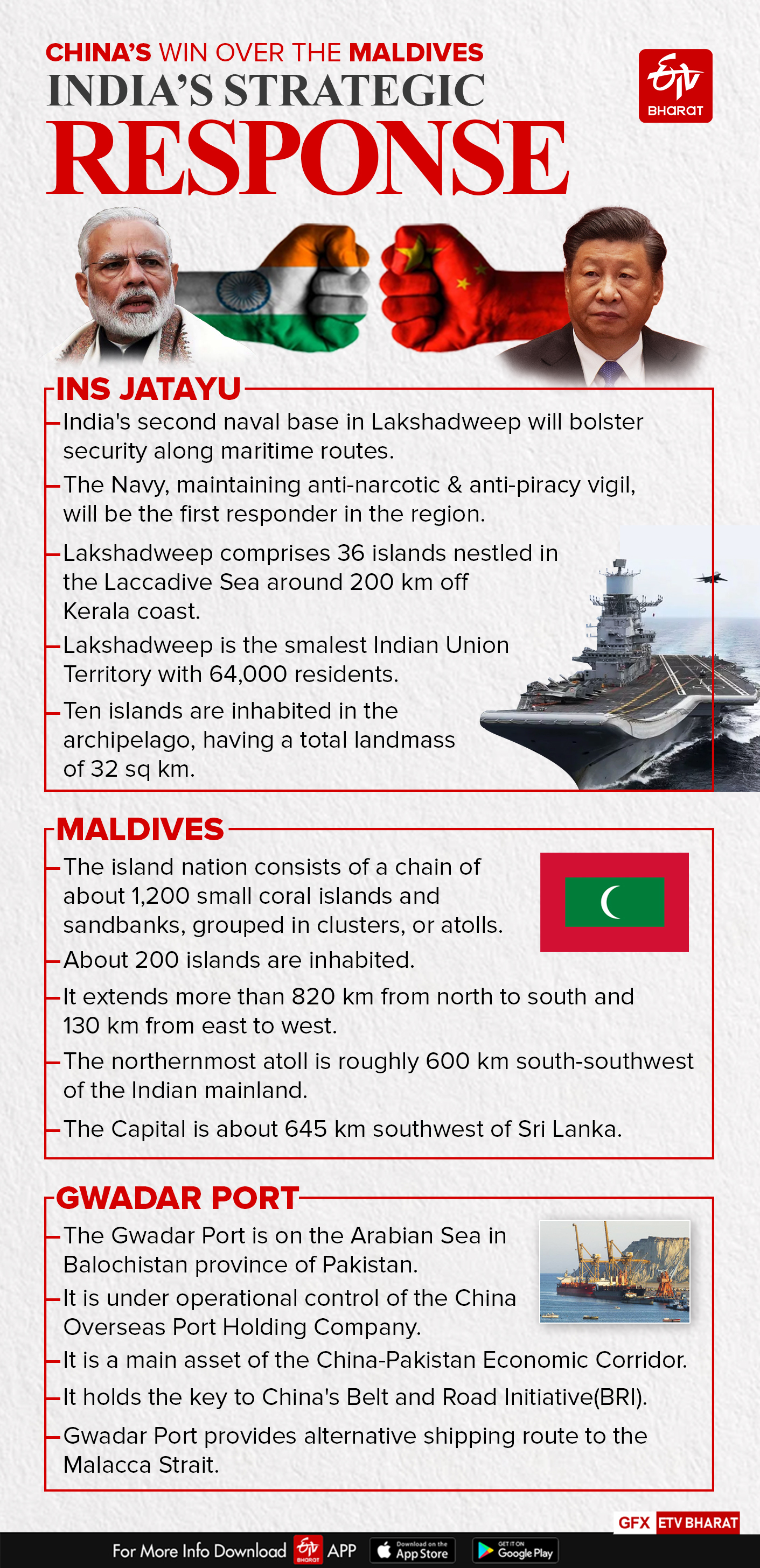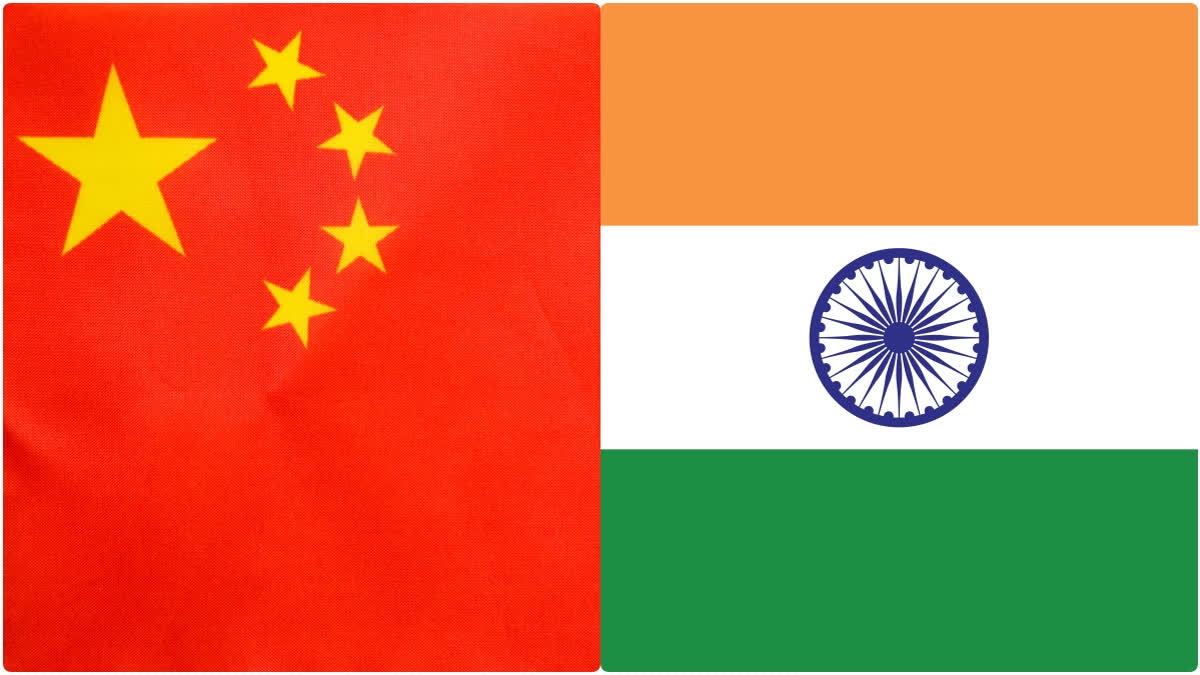The new government in the Maldives' decision to withdraw its troops and even the clearance of the Chinese research vessel 'Xiang Yang Hong 3' to dock at the Male port that was refused permission to dock by Sri Lanka, India and Maldives' long-standing relationship took a bitter turn and opened a way for China.
In yet another blow to India-Maldives ties, the recent defence cooperation agreement for free military assistance and Maldives President Mohamed Muizzu's decision not to renew an agreement with India to conduct hydrographic surveys further intensifies the impression of India en route for the growth of China-Maldives relations.
With mounting maritime rivalry in the Indian Ocean, New Delhi is concerned about the freedom of navigation in international waters critical for Indian trade. According to Wood Mackenzie, India meets 88 per cent of its oil demand through seaborne imports which is highly vulnerable to any interruptions in sea lanes.

To protect the sea lanes through which its trade passes and to counter China's growing presence in the region has become the main concern for New Delhi. At present for China, the Maldives presents a critical link in its "string of pearls" for encircling India. China's base at Gwadar in Pakistan, which is adjacent to the Arabian Sea and can link up with the Maldives off India's south-western coast, then with the port in Hambantota in Sri Lanka.
Additionally, to push down India in the Indian Ocean Region (IOR), Beijing regularly dispatches research and survey ships and unmanned underwater vehicles (UUVs) for gathering ocean data at different parts of the Indian Ocean.
So, India has objected docking of the Chinese research ship Xiang Yang Hong 3 in the Maldives. The bondage between them may further lead to more surveys which will pose a security threat to India in the long run.
Furthermore, the lease of Feydhoo Finolhu, the nearest Maldivian island to the capital Malé to a Chinese company for 50 years alarms India. Establishing a Chinese military base at Feydhoo Finolhu Islands, which is 900 km from Minicoy Island and 1000 km from India's mainland, poses a direct threat to India's security because this base may be used as a military post to track Indian naval movements in the Indian Ocean and also for nuclear submarines. India does not have any military bases in the IOR and has only established surveillance systems in Seychelles, Madagascar, and Mauritius.
In fact, it seems that India lost its secure position in Maldives, to Chinese schemes and tactics. Consequently, to counter China's expansionist activities in the IOR, India has been responding by fortifying its defences in the Lakshadweep islands located in the Arabian Sea, as an alternative to the Maldives.
To keep its hold in the IOR, the Indian Navy on March 6 commissioned its new naval base INS Jatayu in Minicoy Island lies about 125 kilometres (78 miles) north of the Maldives and also inducted multirole MH 60 helicopters into the naval air squadron, in Kochi.
INS Jatayu, serving as India's second base in Lakshadweep, following INS Dweeprakshak in Kavaratti, positioned strategically at Minicoy Island, the southernmost island of Lakshadweep, further intensifies the Indian Navy's operational capabilities and maritime surveillance.
Since Lakshadweep is in the vicinity of the Maldives, the new base with the ability to deploy a fleet consisting of fighter jets, warships, and other naval assets, will further emboldens the Indian Navy to tone down the risk of China claiming control on the western frontier of the IOR.
It would play a pivotal role in safeguarding critical maritime routes, in particular, the route passing through Lakshadweep and Minicoy, the nine-degree channel, interconnecting major commercial shipping lanes on the way to the Suez Canal and the Persian Gulf.
INS Jatayu would facilitate operational surveillance towards anti-piracy and anti-narcotics operations in the Western Arabian Sea. It will also boost the Indian navy’s capability as the first responder in the region and increase connectivity with the mainland. New Delhi is also planning to develop essential infrastructure on Minicoy Island, aimed at developing tourism to enhance economy, purposely to warn Maldives, which depends on tourism revenue.
Initially, this base would be constituted with a small unit of naval personnel. However, it is planned to amplify the facilities and plans are underway to construct a new airfield to accommodate various military aircraft types. This will allow fighter aircraft like Rafales to operate in the western part of the IOR. Additionally, there are plans to extend the existing airfield on the nearby island of Agatti.
As a result, INS Jatayu will be the equivalent of INS Baaz, the cutting-edge naval base in the Andaman Islands. Like INS Baaz, it will be capable of handling all classes of fighter jets and aircraft. In view of that, at the commissioning ceremony the Chief of the Naval Staff Admiral R Hari Kumar said: "INS Baaz to the east in the Andamans and INS Jatayu in the west will serve as eyes and ears to the navy to safeguard our national interest."
The Indian government signed a deal with the United States of America in February 2020, to acquire 24 fourth generation MH 60 helicopters and six of them have been delivered so far.
These Romeo 'Seahawks' were commissioned as the INAS 334 Squadron at INS Garuda, at Kochi on March 6, 2024. These most compelling multi-role helicopters in the world with their cutting-edge sensors, and multi-mission capabilities will enhance Indian naval maritime surveillance, search and rescue operations, and anti-submarine warfare capabilities to counter anti-submarine attacks from rivals in the IOR.
Deploying the Seahawks equipped with advanced weapons, and sensors will effectively address both conventional and unconventional threats in the IOR and guarantees maritime security against potential threats in this strategically significant area.
Undoubtedly, the process of making the Lakshadweep Islands ready for a conflict or war and the induction of MH 60 helicopters will jostle the Indian navy to move forward to defy China’s influence in the region.
The recent inauguration of a number of infrastructure projects at the Indian Navy’s strategically located base in Karnataka’s Karwar, would further India's long-term security interests in the IOR.
The increasing naval power is poised not only to bolster India's surveillance capabilities in the area, reinforcing its efforts to maintain security and stability in the region but also promotes India as the net security provider to other stakeholders in the Indian Ocean.


